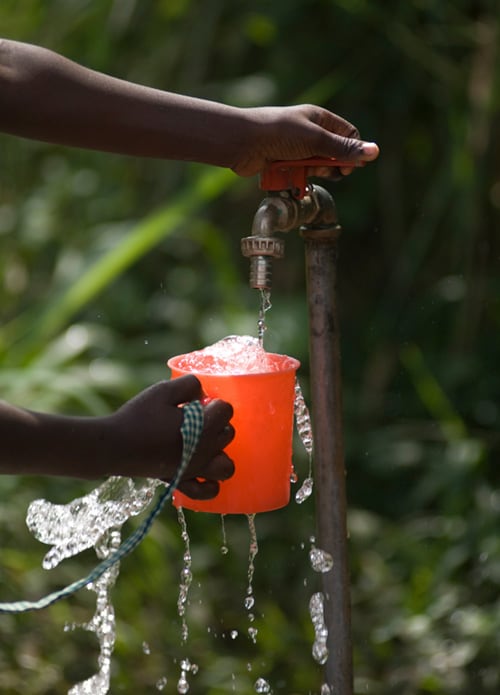Household Water Treatment

In many parts of the world, communities lack the capacity to construct community-wide piped water systems. Today, over 2 billion people do not have access to safely managed drinking water. Household water treatment is treatment of water that happens at home or at a point of use or collection locations within communities (such as schools and community centers). In the absence of a piped water system, this type of treatment can make water safe to use and reduce diarrheal and other waterborne diseases.
There are many factors to consider when choosing water treatment methods for a household or community setting: existing water and sanitation conditions; water quality; ability to install water, sanitation, and hygiene (WASH) facilities; cultural acceptability; accessibility; availability of technology; consistent and long-term use; and other local conditions.
There are many ways to make water safe from harmful germs. The methods used most are:
Water that has fuel, toxic chemicals, or radioactive materials in it will not be made safe by any of these treatment methods. Use bottled water or a different source of water if you know or suspect that your water might be contaminated with fuel or toxic chemicals.
Boiling
Boiling or heating water is the most widely used and effective method to kill disease-causing germs, including viruses, bacteria, and parasites.
Steps for boiling water:
- Bring clear water to a rolling boil for 1 minute (at elevations above 6,500 feet, boil for 3 minutes).
- After boiling, allow the water to cool before use.
- Store the boiled water in clean, sanitized containers with tight covers.
If the water has a harmful chemical or radioactive material in it, boiling will not make it drinkable.
Chlorination
Chemical disinfection is another common method for making water safe to use. Chlorination is a common chemical disinfection technique that involves adding a chlorine-based product (such as sodium hypochlorite, calcium hypochlorite, or household bleach) to water to kill bacteria and viruses. Other chemical disinfectants, such as iodine and chlorine dioxide, can also be effective for disinfecting water. Using or drinking water with small amounts of chlorine, iodine, or chlorine dioxide does not cause harmful health effects and provides protection against waterborne disease outbreaks.
Chlorine products can kill most harmful or disease-causing viruses and bacteria, but most disinfectants* are not as effective as boiling for killing more resistant germs, such as the parasites Cryptosporidium and Giardia.
*Chlorine dioxide tablets can kill Cryptosporidium if you follow the manufacturer’s instructions correctly.
If the water has a harmful chemical or radioactive material in it, adding a disinfectant will not make it drinkable.
Flocculation-Disinfection
Flocculation-disinfection is a water treatment process where a product is added to water and solids form larger clusters, or flocs, that can be removed from the water.
PUR sachets are a widely used flocculant-disinfectant powder. The PUR product contains powdered ferric sulfate (a flocculant) and calcium hypochlorite (a disinfectant). The PUR sachet contents are added to a 10-liter volume of water and stirred for 5 minutes. After stirring, solids settle to the bottom of the container and the water is poured through a cloth filter into a secondary water container for safe storage and use. Note: For residual protection, there is also chlorine in PUR.
This method is most appropriate when water is turbid (cloudy).
If the water has a harmful chemical or radioactive material in it, adding a flocculatant powder will not make it drinkable.
Solar Disinfection
Solar disinfection is a method of using heat and UV radiation to kill bacteria and parasites in water. Solar disinfection works by placing contaminated water in a transparent container and exposing it to strong sunlight for 6 to 8 hours if sunny, or 2 days (if cloudy).
This method is most appropriate when water is clear and clean, transparent containers for treatment are available.
If the water has a harmful chemical or radioactive material in it, solar disinfection will not make it drinkable.
Slow Sand Filtration
Slow sand filtration effectively removes turbidity (cloudiness) and microorganisms through various biological and physical processes in a single treatment step. A slow sand filter consists of vertically arranged layers of components. When constructed, the filter consists of a tank, a bed of fine sand, a layer of gravel to support the sand, a system of underdrains to collect the filtered water, and a flow regulator to control the filtration rate. No chemicals are added to aid in this filtration process.
- World Health Organization and UNICEF. Progress on Household Drinking Water, Sanitation and Hygiene 2000-2020: Five Years Into the SDGs. 2021.